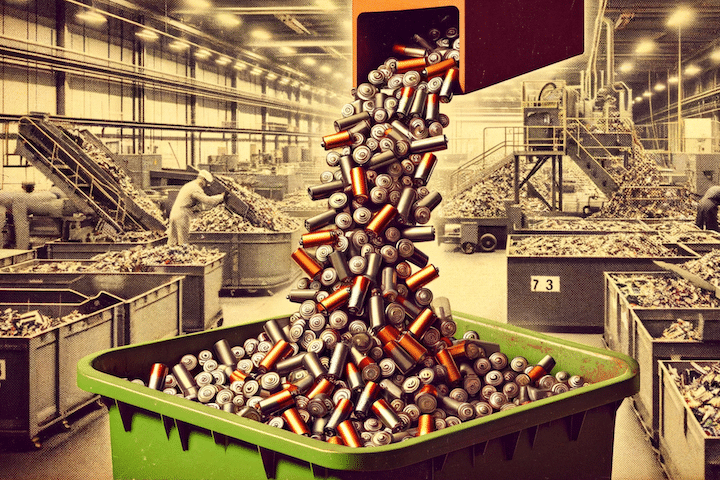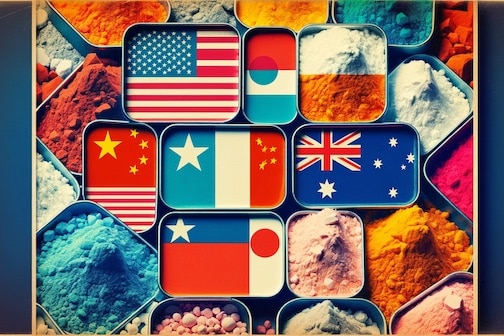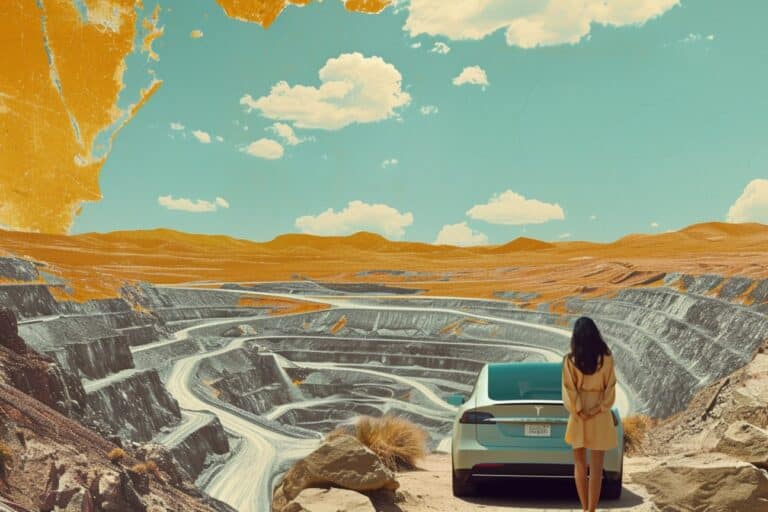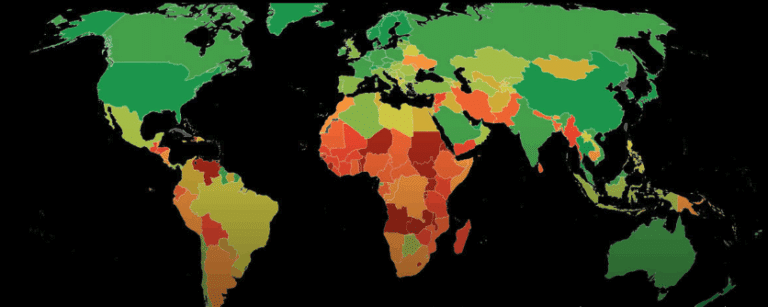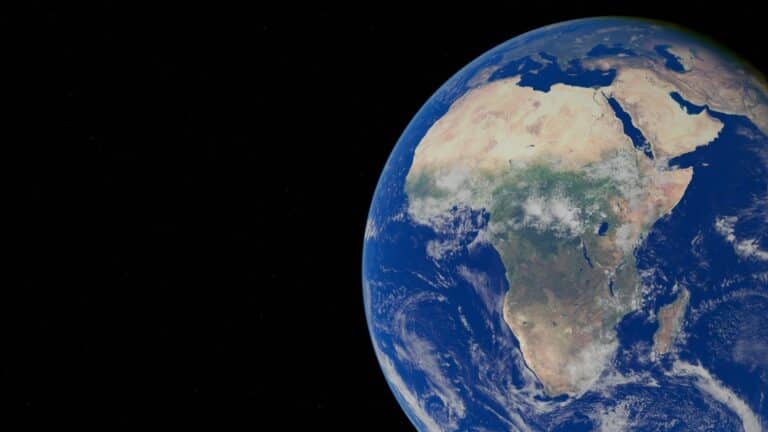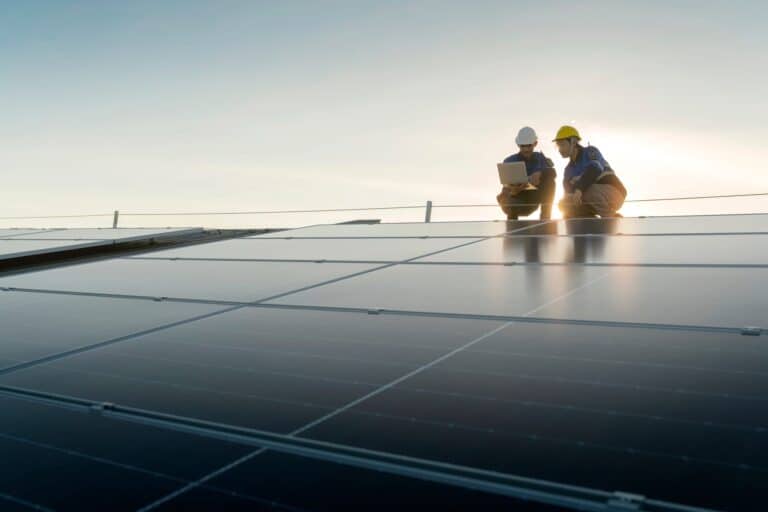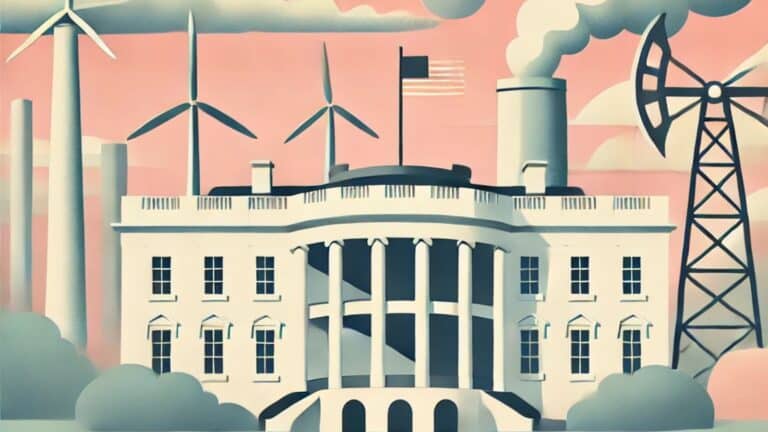Melissa Lott: [00:00:02] Hey, Daniel. How’s it going? [00:00:02][0.8]
Daniel Woldorff: [00:00:03] Hey, Melissa. It’s going pretty good. How are you? [00:00:05][2.5]
Melissa Lott: [00:00:06] I’m good. You’re one of the show’s producers, and I understand that you want to talk to me about something. [00:00:12][6.3]
Daniel Woldorff: [00:00:13] Yes. I want to talk to you about the zero carbon sports team. [00:00:18][4.6]
Melissa Lott: [00:00:18] Oh, my gosh. I love the zero carbon sports team. That was the what, episode two like early days. [00:00:24][5.3]
Daniel Woldorff: [00:00:24] Michelle Episode two. That’s right. It is absolutely one of my favorite episodes because this is this one where you explain this idea, the Zero Carbon team idea, and it’s just totally stuck with me ever since. You know, basically like that’s solar, wind, nuclear and all these sources of electricity that they work together like a sports team. [00:00:43][19.1]
Melissa Lott: [00:00:43] That’s exactly right. I mean, they are a team, right? So you’ve got your star players, you got your strikers like wind and solar, and they generate that cheap zero carbon electricity. But when the sun isn’t shining or the wind is blowing, you need your midfield and your defenders. So your energy storage, things like batteries and your firm dispatchable power. So nuclear or hydro, maybe some fossil fuels with carbon capture are just things that are around 24 seven and they all work together. They are a team. [00:01:10][26.7]
Daniel Woldorff: [00:01:11] Right. So I want to talk to you about one player in particular that I’ve been learning about, one particular source of electricity, and I would kind of call it an underdog. [00:01:20][9.6]
Melissa Lott: [00:01:23] Oh, tell me more. What technology are we talking about? [00:01:25][2.2]
Daniel Woldorff: [00:01:25] Well, so this is one source of power that people don’t expect much of. They kind of forget about it. I’m talking about geothermal energy. This is, of course, where you drill down into the earth to find underground steam to drive turbines and generate electricity. [00:01:40][15.3]
Melissa Lott: [00:01:41] Okay. So here’s the thing about geothermal. You’re right. It doesn’t get nearly as much attention as wind and solar. But once you build it, it works pretty well and it’s on all the time. So it’s those defenders, those 24 seven 365 plants that I was talking about, those members of the team that are really, really important. And they can run all the time without carbon emissions, which is exactly the kind of support that wind, solar and batteries need to keep the power on, keep it reliable and affordable. [00:02:07][25.7]
Daniel Woldorff: [00:02:08] Exactly. So this is why I was super excited about geothermal. We’re not going to run out of the Earth’s heat for like thousands of years. And when I first started looking into it, I thought to myself, This energy is kind of magic. If you can drill and you can find heat. Boom, you have energy. [00:02:24][15.7]
Melissa Lott: [00:02:24] So it is kind of magical. But I am going to zoom in on one thing you said, which is that you have to find the heat and then a lot of stuff you need to do to be able to find the heat. And then once you find it, you have to be able to tap into it and actually use it. [00:02:38][14.0]
Daniel Woldorff: [00:02:39] This is exactly what I wanted to talk to you about. You study energy for a living, and I want to try to figure out what role geothermal could play on that zero carbon sports team. I’ve been wanting to understand what it does well and also what’s holding it back. So I talked to some people who work in geothermal in a country that’s built its geothermal industry from scratch. [00:03:01][22.4]
Anna Mwangi: [00:03:02] We started with failure, so we drilled a well unproductive, second, well unproductive. [00:03:06][4.3]
Nicholas Mariita: [00:03:07] But they said well, actually was very powerful and produced enough. And if you sit on land now, that’s about almost 40 years later. [00:03:15][7.8]
Melissa Lott: [00:03:15] Wait, are we talking about Kenya right now? This sounds like Kenya. [00:03:18][2.7]
Daniel Woldorff: [00:03:19] This we are talking about Kenya. And it is this totally incredible success story where today it generates nearly half of its electricity from geothermal. I also talked to someone who thinks that we could actually expand geothermal around the world. This is someone who imagines a future for geothermal, where it also helps oil and gas workers transition to the net zero economy. [00:03:40][21.1]
Jamie Beard: [00:03:40] We’re building geothermal power plants. We’re producing green electrons. We’re also producing jobs for oil and gas workers. [00:03:47][6.4]
Daniel Woldorff: [00:03:47] What I was thinking is that I’ll share with you what I learned from my research and then see what you think about it. And in particular, the questions I’m thinking about are what role will geothermal play on that zero carbon sports team? Is it a solid sort of supporting player useful in like a few niche situations, or could it become a more of a star player on par with solar and wind? [00:04:09][22.0]
Melissa Lott: [00:04:10] Sounds fun. Let’s do it. Let’s dig in. No pun intended. This is the big Switch show about how to rebuild the energy systems that are all around us. I’m Dr. Melissa Lott and I’m the director of research at Columbia University’s CFA Center on Global Energy Policy. [00:04:26][15.6]
Daniel Woldorff: [00:04:26] And I’m Daniel Waldorf. I am a producer for the Big Switch. [00:04:29][2.2]
Melissa Lott: [00:04:33] And today we’re going to talk about geothermal energy. [00:04:35][2.3]
Daniel Woldorff: [00:04:36] And we’re going to start with Kenya, a country that gets nearly half of its electricity from geothermal, and it’s built its geothermal industry from scratch. So the early days of geothermal in Kenya were a bit like the Wild West. Instead of prospectors looking for gold, there were exploration teams looking around Kenya’s volcanic great Rift Valley for underground steam. Back in the eighties, these teams would go many miles out into the wilderness and there were baboons and hippos and zebras. But apparently the Buffalos were the worst. [00:05:07][31.6]
Nicholas Mariita: [00:05:08] One of my colleagues to give us his story that when they first joined, he went to the field with his bosses. And there are just great buffaloes. [00:05:16][7.5]
Daniel Woldorff: [00:05:17] This is Dr. Nicholas Moneta. He was part of one of the early exploration teams in Kenya. He’s now professor of geophysics at Data and CAM at the University of Technology, a public university north of Nairobi, where he directs the Geothermal Energy Training and Research Institute. So first, a little bit of history. Back in 1956, the Kenyan government drilled one successful geothermal well in the Great Rift Valley. But the technology was pretty immature, so it took until 1981 before it built its first geothermal plant. But as more and more Kenyans connected to the power grid, the Kenyan government wanted to grow its geothermal capacity. So in the eighties and nineties, it funded teams that went looking for more heat. Like Nicholas’s team. Nicholas remembers seeing and hearing the first geothermal wells. [00:06:04][47.2]
Nicholas Mariita: [00:06:05] You could hear the power. They were steam coming out. They were testing it or something. [00:06:10][4.5]
Daniel Woldorff: [00:06:10] What did it sound like? [00:06:11][0.7]
Nicholas Mariita: [00:06:11] Oh, I just like, you know, the pressure cooker, that kind of sound. Then the painfully and you could see the amount of power coming out. And we just had to kind of plug right here because the sound was just too great. [00:06:26][15.1]
Melissa Lott: [00:06:27] And I can completely picture it. I mean, when you look at geothermal wells, these are not tiny things. So the sound is like a pressure cooker, but these are massive things that empower entire cities. I know when I was in Iceland over the summer with my students just going into the facility and showing them this the size of the pipes coming out of the ground, they were massive. But before I go too far down the rabbit hole, I’m describing what these things look like. I think we should step back a minute and talk about how geothermal and geothermal power plants actually work. [00:06:56][28.7]
Daniel Woldorff: [00:06:56] I totally agree. So let’s pause on Nicholas’s story here. The best way I’ve heard geothermal wells described is that they’re like big pockets of steam underground pockets that can be several kilometers deep. [00:07:08][11.9]
Anna Mwangi: [00:07:09] So it’s like putting a straw into the ground and extracting that, although that’s very hot and highly pressurized. [00:07:18][8.5]
Daniel Woldorff: [00:07:19] This is Dr. Ana Mwangi. She’s a geophysicist that works at Kengen, the major utility in Kenya. [00:07:24][5.6]
Anna Mwangi: [00:07:25] Like this straw is made of metal. It runs that turbine, and then that turbine is coupled to a generator. And that generator makes sure you have the electricity and the extra electricity is connected directly to the grid. [00:07:42][16.9]
Daniel Woldorff: [00:07:43] So in modern geothermal plants, you extract the steam to power turbines, but you also inject that water back down into the earth to recharge the groundwater. [00:07:52][9.1]
Melissa Lott: [00:07:52] Right. So there’s a few variations on this, too, that we should just point out. So you can use that steam to spin turbine, but you can also use that steam to heat up a home or an apartment building or even an entire neighborhood. And we call that district geothermal or district heating with geothermal. And for low temperature applications like heating a home, you can drill some pretty shallow wells. So go down to some pretty shallow depths, maybe a few hundred feet. And you can just use the ambient heat to heat up air instead of water. But for generating electricity, we need to drill much deeper wells because we have to get really high temperatures. [00:08:26][33.8]
Daniel Woldorff: [00:08:27] Right. You need those high temperatures so that you can get steam to drive the turbines and to get that steam. You need some key geological ingredients. And these are important because they’re not so easy to find. [00:08:39][11.4]
Anna Mwangi: [00:08:39] So you need a heat source, which is a magma body that is heating up the system. You need the actual water to be getting through. You need structures like folds and fractures that allow the water to seep through the rock. And you also need a seal. A seal so that everything will be held intact so that when you drill, you can actually get it at high pressure. [00:09:04][24.3]
Daniel Woldorff: [00:09:04] So you need heat, water fractures and a seal. And the easiest place to find these ingredients is typically in volcanic regions. [00:09:13][8.7]
Melissa Lott: [00:09:14] And I think this is a really important point that folks should know. That is that geothermal has historically been limited to only a handful of places where there’s volcanic activity near the surface, where you can often see things like volcanoes and vents and geysers and hot springs. And these are places like Kenya, but also the Philippines, some parts of. The US and Iceland. And these have historically been the most economical places to drill geothermal wells. [00:09:38][24.3]
Daniel Woldorff: [00:09:39] But even in those places, it’s not so simple as just finding a geyser drilling down in most places. You have to use specialized technology and expertise to find the exactly right place to drill. This is where people like Ana and Nicolas come in. And here’s Ana to explain. [00:09:54][15.1]
Anna Mwangi: [00:09:55] We can do x rays of the earth. You know, you don’t necessarily drill it. Yes, you do some sort of an x ray of the earth. Then it gives you images. [00:10:04][9.3]
Daniel Woldorff: [00:10:05] So we’re talking about metaphorical x rays here. Like they’re not using x ray machines that doctors use. But today there is a bunch of sophisticated gear that they use to detect heat, water, pore space, all those ingredients that you’re looking for. [00:10:19][14.3]
Anna Mwangi: [00:10:19] So what we do as geologists in geophysicists and geochemists is to go around looking for these places that you can have steam stored. So and then we advise on where to drill. [00:10:32][12.7]
Daniel Woldorff: [00:10:33] This is what Nicholas Murray and his team were doing back in the 1980s, looking for steam and X-raying the Earth, like Ana said. But the technology wasn’t as well developed as it is today. [00:10:43][9.9]
Nicholas Mariita: [00:10:43] Yeah, some exploration development is, for lack of a better word, it’s a risk one takes, but a calculated risk and yes, destroy. The technology was not as advanced as now. [00:10:56][12.7]
Daniel Woldorff: [00:10:57] His team had been scouring the Great Rift Valley, pinpointing places that they thought they could find productive wells. And when they drilled their first successful well, it was a big deal. [00:11:06][9.2]
Nicholas Mariita: [00:11:07] So that day, I remember my first aware that I was actually drilled and found to be reliable. We went and bought two goats and those traditional beard dancing in the evenings was really nice. I don’t remember. [00:11:21][13.8]
Daniel Woldorff: [00:11:21] Well, since then, the technology for finding hidden geothermal has gotten a lot better, and Kenya’s geothermal industry has drilled many wells since then. But Kenya built only one geothermal plant in 1981, and they didn’t build any more for another 20 years. [00:11:36][15.0]
Melissa Lott: [00:11:37] Wait, So that’s really interesting to me because I know that Kenya in the eighties, you had a small minority of the population that had access to electricity. So it wasn’t that they didn’t want more electricity. I’m sure the country did. So I’m wondering if this comes down to cost. Did you find out anything about the cost of the plants they were building at that time? [00:11:57][20.0]
Daniel Woldorff: [00:11:58] Yes. So cost was the problem that I learned about over and over again. I did some background research on this. And the thing is, to generate geothermal energy, you first have to explore. That costs money. Then you have to drill and that costs money. And they have to finally build a geothermal plant and that costs money. And so capital is difficult to come by anywhere. You are especially difficult to come by in the global South in a country like Kenya. And Anna talked to me about the exploration piece of this, because even today, it’s still really expensive to drill wells. [00:12:29][31.3]
Anna Mwangi: [00:12:30] So if you go around poking holes, every hole you poke is more than $5 million. Yeah. So you can’t afford just to poke a hole. That hole is costing you money in millions of dollars. [00:12:40][10.5]
Melissa Lott: [00:12:41] Yeah, $5 million. That’s an expensive mistake. If you drill in the wrong place. And this is the thing up front costs. Because once you build geothermal, it’s cheap to run. But like some other technologies, it takes a lot to get it to the point where it’s actually producing electricity. So you have to have that money upfront on day one to pay for the facility before you get the electricity that comes from it. [00:13:05][24.1]
Daniel Woldorff: [00:13:05] Right. So this upfront cost problem was one of the biggest factors holding back geothermal in Kenya. But in the 2000, things actually started to change after remaining flat for 20 years. Kenya’s geothermal capacity increased tenfold from 2003 to 2020. New geothermal plants popped up across the country. Meanwhile, the percentage of Kenyans with access to electricity rose from 15% to 70%, basically across that same time period. This is all according to the International Energy Agency. [00:13:36][30.5]
Melissa Lott: [00:13:37] Wow. I mean, those are some big jumps. So in your research, what did you find out happened? What changed in the early 2000s? [00:13:45][7.8]
Daniel Woldorff: [00:13:46] Well, it seems like it came down to government action in 2001. A big drought dried up hydroelectric dams, causing outages across the country. [00:13:55][9.1]
Nicholas Mariita: [00:13:56] Young people were now at about, say, 15 to 20 years, cannot remember the pains of having power rationing. [00:14:03][6.9]
Daniel Woldorff: [00:14:03] Nicholas here is talking about power rationing, meaning that sections of the grid had to be shut down because it didn’t have enough power. Power rationing was happening in the nineties and 2000. [00:14:13][9.9]
Nicholas Mariita: [00:14:14] That was very frequent because at that time almost 90% of electricity was coming from hydropower. So when they started, the dams go down and this meant that our power generated. [00:14:24][10.6]
Daniel Woldorff: [00:14:25] So these problems had been happening for years, but that big drought in 2001 really put pressure on the government to find a new source of power. Our as soon as possible. But fortunately, since the eighties and nineties, there already been a bunch of legwork done on geothermal. Teams like Nicholas’s had been looking for the best places to drill and build plants. This was exploration funded by the government, the Kenyan utility and major financial institutions like the U.N. Development Program. So they had a pretty good idea of where to build new plants. All they needed was to pull together the loans and financing to build those power plants, which they were able to get from global financial institutions and private investors. But all of that upfront investment led by the government paved the way for that financing. [00:15:11][45.7]
Nicholas Mariita: [00:15:12] The beginning, it’s expensive in terms of investments, but in the long run it is cheaper and even better still that it is on 24 hours a day and they just realize it’s a resource that is indigenous to to us. [00:15:27][14.3]
Melissa Lott: [00:15:27] So listening to what Nicolas is saying, it brings me back to countless stories that I know about different countries and what it takes to get big infrastructure done. It’s not about one group moving forward. You need to move a lot of different groups. In this case, it was the utility. It was a bunch of investors. It was the government. They all had to sit down and table together and move in the same direction. And that’s just something we see time and time again. [00:15:52][24.5]
Daniel Woldorff: [00:15:53] Something else that the government did was invest in Kenyans geothermal expertise. [00:15:57][4.2]
Nicholas Mariita: [00:15:58] What the government did, it really said, as Kenyans, too, and institutions abroad, notably Iceland, Japan, Italy and New Zealand. So over time, many Kenyans have been trained abroad. [00:16:15][16.8]
Melissa Lott: [00:16:15] I know when I was in Iceland, our bus driver who was taking us around the island, spoke extensively about the work force training program that Nicolas is talking about, about how many people from other countries come to Iceland every year to get training on how to build and operate geothermal facilities. [00:16:30][14.6]
Daniel Woldorff: [00:16:31] Right. And so it’s sort of like all the pieces sort of came together. The exploration had been done, the workforce had been trained, the capital was finally there. And now Kenya has 830 megawatts of geothermal capacity, which they’re planning to double to 1600 megawatts by 2030. But the country’s total geothermal potential is an estimated ten times what it is today. So there’s a ton more that we can expect from Kenya’s geothermal. [00:16:57][26.3]
Melissa Lott: [00:16:58] This is really tremendous. Like you’ve done a lot of research and talked to a lot of folks. What are the biggest takeaways that you think you have at this point? Like, what is the biggest things that you learned? [00:17:07][8.9]
Daniel Woldorff: [00:17:08] Yeah, I would say number one, the obvious one. The best places to do geothermal are in places with volcanic activity. That’s just going to be the places where it’s easier to access that heat. Number two, geothermal is great, but it’s difficult to build because of a combination of upfront costs and the uncertainty about drilling. And number three, I would say that government leadership seems to be pretty critical in sort of facilitating the funding and exploration and capacity building that you might need to build an industry. And maybe the fourth lesson is that investment in new technology may not pay off until just the right moment when a crisis requires some shift in the energy system and a new technology can fill that need, which is what seems to have happened in Kenya, where a crisis precipitated government action to invest in geothermal. [00:17:59][50.9]
Melissa Lott: [00:18:00] Absolutely. And in the middle of the current crisis that we’re living in, we’re seeing places like Kenya, places that have built out these technologies already benefiting from them. The lights stay on. But I’ll say is it’ll be interesting to see in five, ten, 15 years how different things look because of the responses that countries are making today to the energy crisis that’s happening right now. [00:18:22][22.1]
Daniel Woldorff: [00:18:23] So that brings us back to the climate crisis happening today and the question of whether geothermal could become a bigger player on that net zero sports scene that we talked about at the top of the show. [00:18:33][10.2]
Melissa Lott: [00:18:34] We can see that geothermal is one of those few technologies that can actually provide 24 seven power. And so if you have the resource, it can be really valuable, but it takes a lot of upfront investment and you have to be able to tap into a geothermal hot spot in the first place. [00:18:48][14.5]
Daniel Woldorff: [00:18:49] Right. And in my research, I came across some new technologies that could help us tap into those resources in a whole bunch of new places around the world. [00:18:56][7.4]
Jamie Beard: [00:18:57] If you drill anywhere in the world, if you drill down, it gets really hot. And the further you go, the hotter it gets. [00:19:04][7.6]
Daniel Woldorff: [00:19:05] This is Jamie Beard. She is the executive director of a nonprofit called Project Innerspace. And this is an organization that focuses on overcoming some of those challenges that geothermal has historically had. [00:19:16][10.8]
Jamie Beard: [00:19:16] In many places. You need to drill many kilometers down to get to get heat. That’s sufficient to produce electricity, for instance. So, you know, five kilometers, eight kilometers, some of the some of the more lofty goals for geothermal, ten kilometers. Right. And at about ten kilometers, you can achieve geo economical geothermal power production anywhere in the world. [00:19:43][26.6]
Daniel Woldorff: [00:19:44] So what Jamie’s talking about is just one way that we can access more geothermal resources. And what I’ve seen and talked about most is a new wave of technology called enhanced geothermal systems or engineered geothermal systems. EEGs for short and EEGs utilizes new techniques in drilling that were pioneered by surprise. The oil and gas industry. And the first technique is called directional drilling. [00:20:09][25.7]
Jamie Beard: [00:20:10] And this is also a technology that was developed and enabled the shale boom. And it’s essentially the concept of being able to to drill and turn. So you turn your drill bit and you can aim for specific places underground. [00:20:29][18.8]
Daniel Woldorff: [00:20:30] Directional drilling allows you to reach heat that you might not otherwise be able to get to. Another technique from the oil and gas industry is hydraulic fracturing, a.k.a. fracking. [00:20:39][9.1]
Jamie Beard: [00:20:40] Now exists is one of the geothermal concepts that’s actually benefiting enormously from advances in hydraulic fracturing. And that’s again, that’s a technology that was developed, you know, through that through the shale boom for for the production of of natural gas. And if you think about EEGs and trying to circulate a fluid through the subsurface, when you have existing fractures, it might be beneficial to try to widen them a little bit or try to try to make more fractures in the rock so you can circulate more fluid. [00:21:14][34.4]
Daniel Woldorff: [00:21:15] More fluid and more cracks means you can access more heat. Jamie points out that there are a whole bunch of new technologies like these that are being tested out in geothermal right now. [00:21:24][9.0]
Jamie Beard: [00:21:25] Over the past couple of years, starting in about 2020, maybe at the end of 2019. A whole flourish of geothermal startups launched out of the oil and gas industry. [00:21:35][10.5]
Melissa Lott: [00:21:36] See, my friend’s really exciting when you think about different industries who were doing one thing and they say, as we go to net zero, I have a tool that could help. Let’s see how we can use it. That’s really exciting to me. [00:21:48][11.9]
Daniel Woldorff: [00:21:48] How much do you think these technologies could could solve some of the challenges that geothermal has had historically? [00:21:53][4.5]
Melissa Lott: [00:21:54] So when I think about how far we’ve come with understanding what it takes to drill deep to find different resources, we’ve come a long way and we’ve seen the impacts of this on the cost of things like natural gas getting cheaper. So when we talk about. Geothermal. We’ve learned a lot about how to drill deeper wells and to do it more cheaply. And we’ve learned a lot about how to find those hotspots. And so both of those things make the future of geothermal look a lot brighter than it maybe did a couple of decades ago. [00:22:22][28.0]
Daniel Woldorff: [00:22:23] The relationship between industries that you’re just talking about, I think it gets to one of the most interesting arguments that I heard Jamie make, which is that a bigger geothermal industry could help oil and gas workers transition to the net zero economy. I asked her what her pitch to oil and gas workers would be to move into geothermal. [00:22:40][17.3]
Jamie Beard: [00:22:42] You’re not arguing a change in their lives. They are using what they already know how to do. They are going to the field and drilling wells just like they do now. It’s existing skill sets, even even in terms of D level petroleum engineers, we’re talking about a almost identical overlap with what they do now in oil and gas. [00:23:08][26.7]
Melissa Lott: [00:23:10] So this brings me back to when we actually went to Colorado, Daniel, and we were talking through what it takes to transition communities, communities where people have certain skill sets and can they use their skill sets in the future. Geothermal is a really interesting example of a direct ability to transfer skills. You’ve got a skill and you’ve used it for a while to tap into oil and gas and now you’re going to use it to tap into geothermal. [00:23:31][21.8]
Daniel Woldorff: [00:23:33] So that transfer skills is kind of already happening there. Startups that are staffed by oil and gas folks testing out new geothermal technologies in the field. They’re looking for new sources of underground heat. But in the meantime, there is an existing industry that still has a ton of potential to expand, like the one in Kenya right now. Nicholas Moneta leads a training program at the Data Command at the University of Technology, where they’re building up Kenya’s expertise for the growing geothermal industry there. [00:23:59][26.8]
Nicholas Mariita: [00:24:00] So much money is was being spent sending Kenyans abroad for training. So we thought we could cut that. Of course, the amount of money used in training, for example, a person in Iceland for six months is enough to train like three or four people for two years. It’s much cheaper. And I think we have done that. We have trained quite a bit the last couple of years and so my job is basically just on the capacity building. [00:24:29][28.8]
Daniel Woldorff: [00:24:29] And Kenya is now starting to export that expertise to other countries like Djibouti and Rwanda, where they’re beginning to develop their geothermal resources. Ana Mwangi says if your country has geothermal potential, you should get in touch. [00:24:42][12.9]
Anna Mwangi: [00:24:43] Come on, it’s contact us. You know who just come and help you develop the resources. [00:24:48][4.6]
Melissa Lott: [00:24:51] That’s our show. And we’re going to take a break until early next year. And we’ll be back with more stories about how the energy transition is happening all over the world right now. The Big switch is produced by Columbia University’s Center on Global Energy Policy, in partnership with Post-Script Media. This episode not only starred me, but star Daniel Walter, who’s also a producer on the show. Also producing the show is Alexandria. Her story editing is by hand. Bailey Mixing and scoring is by Sean Mark Bond and Greg Bill Frank and Theme songs by Sean Marquand. A special thanks to our Columbia team, General Cooley, Liz Smith and Natalie Volk, our managing producers, Cecily Meza Martinez, and our executive editor, Stephen Lacy. I’m Dr. Melissa Lott and this is the big switch. Happy holidays. [00:24:51][0.0]
[1413.6]



